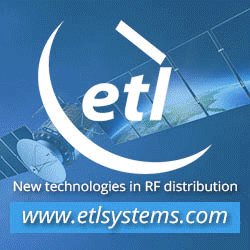Rogue Space And Dawn
Aerospace Announce Cooperation Agreement For
Propulsion Systems For Rogue’s Orbot™ Spacecraft
Programs
May 19, 2021
Rogue Space Systems
Corporation and Dawn Aerospace have signed a
cooperation agreement where Rogue has selected
Dawn Aerospace as their partner for spacecraft
propulsion systems. The first project in their
partnership is a 6-axis Reaction Control System
(RCS) for their Laura, Charlie, Fred and Bob
Orbot™ spacecraft programs. The resulting
spacecraft(s) will include demonstration
programs and missions as well as the deployment
of Rogue’s Orbots™ destined to reside in LEO,
MEO, GEO and Cislunar.
Established in 2020, Rogue
Space is building a fleet of Orbital Robots
(Orbots™) equipped with highly sophisticated
sensors, cameras, robotics, and artificial
intelligence (AI) software to enable up-close
inspections and assistance of satellite
operator’s assets in space. The company recently
announced a partnership with NanoAvionics for
systems integration and engineering of their
Orbots™.
“Here at Rogue, our team is
working to define a dynamic and adaptive
spacecraft architecture that will serve as a
foundation to the services infrastructure we aim
to build in space. From the beginning, Dawn has
understood our goals and joined us in this
challenging endeavor,” adds Rogue Space CEO,
Jeromy Grimmett.
“Rogue’s fleet of Orbital
Robots is planned to range from 12U to large
propulsive ESPA-ring satellites. We have a
solution designed to grow as they grow, and
we’re excited the team has chosen Dawn as their
spacecraft propulsion partner, said Joshua Rea,
Business Development at Dawn Aerospace. “We’re
starting with RCS, but this is just one of the
modules within our extensible propulsion
architecture. It’s part of a common system that
can be configured to any mission or satellite
size Rogue needs.”
In-space propulsion systems
are equipped with thrusters (small rocket
motors) that form part of the satellite itself.
They allow satellites to maneuver in space after
their initial boost onto orbit. Thrusters serve
several functions; they can perform corrective
maneuvers if a satellite has been delivered to
an incorrect orbit, they can orientate a
satellite, can be used for collision avoidance,
and can carry a satellite further afield, for
example, to a higher orbit or on a mission to
the moon or another planet.
In December of 2020, Rogue
entered into a Cooperative Research and
Development Agreement (“CRADA”) with the Air
Force Research Laboratory (AFRL) Space Vehicles
Directorate, Geospace Technologies Division. The
CRADA focuses on research areas of combined
sensing and propulsion capabilities, as well as
enabling the examination of
Commercial-Off-the-Shelf (COTS) components to
determine their feasibility for future space
applications on a proliferated architecture.











